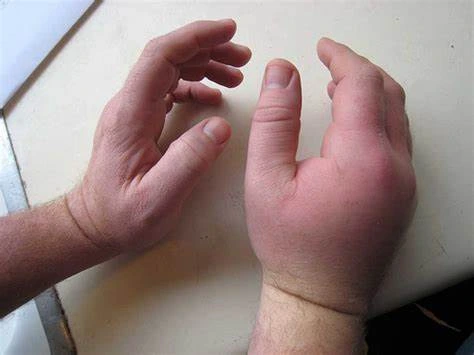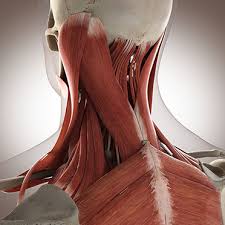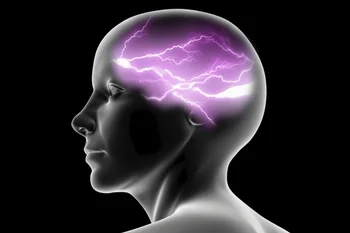Bee Sting Swelling
Introduction
A Bee Sting can cause reactions ranging from temporary localized pain and swelling to severe and extensive swelling requiring emergency care. Bee stings occur when a bee injects venom through its stinger into the skin of its victim.
While a typical reaction results in minor swelling, redness, and pain at the site of the sting, some people may experience dangerously excessive swelling that indicates a severe allergic reaction.
Venom from honey bees (Apis mellifera) contains a mixture of components including enzymes, peptides, and amines that can trigger inflammatory and immune responses. Normally, bee venom causes only a localized reaction due to the small amount injected. However, those with hypersensitivity to bee venom compounds can suffer more severe immune reactions resulting in substantial swelling, sometimes extending across an entire limb or other body part.
In the most serious cases, massive systemic swelling accompanied by breathing difficulty or plummeting blood pressure signifies a life-threatening anaphylactic reaction. Understanding the mechanisms behind excessive bee sting swelling can help raise awareness and improve preventative care.
Causes & Mechanisms of Bee Sting Swelling
Bee venom contains a mixture of active components including enzymes like phospholipase A2 and hyaluronidase, peptides like melittin and apamin, as well as small molecules like histamine, dopamine, and norepinephrine.
When a person gets stung, these substances get delivered into the tissue through the bee’s stinger causing localized injury. The specific venom components provoke different effects – melittin and phospholipase A2 damage cells and stimulate the release of inflammatory mediators, apamin acts as a pain stimulus, while histamine directly triggers swelling.
In most people, the initial release of histamine and other inflammatory chemicals accounts for the common localized reaction – pain, reddening, and some swelling confined to the area around the sting site. Additionally, the trauma of the sting causes a normal immune reaction – blood flow increases to the site, white blood cells are recruited and products are released to start healing and fight infection. This localized immune response usually quiets down within a day or two.
However, in those with an allergy to bee venom, a much more vigorous system-wide immune reaction occurs. People can have IgE antibodies against specific venom proteins like phospholipase A2 or be sensitized to react to histamine or other compounds. When stung, these individuals immediately mount an exaggerated immune response mediated by antibodies and other white blood cells like mast cells.
Massive amounts of inflammatory chemicals like histamine, leukotrienes, and cytokines are spilled into the body triggering widespread swelling and fluid leakage from blood vessels. Depending on the severity, this swelling can involve substantial areas with potentially critical consequences.
Understanding these mechanisms of swelling reactions can improve diagnosis and emergency care following bee stings.
Symptoms & Diagnosis of Bee Sting Swelling
Bee sting reactions can vary tremendously in terms of symptoms and severity. At first, most people just experience instant, sharp pain at the actual sting site. This is soon followed by some amount of redness, warmth, and swelling around the area as the venom takes effect. Typically, the swelling enlarges over the next day or two, potentially covering an area up to a few inches across before gradually improving. Other commonly reported symptoms include itching, minor bruising, or hives.
However, in those with more severe swelling reactions, the swelling and symptoms both escalate rapidly. Rather than being confined to the sting vicinity, extensive edema (fluid accumulated in tissues) can develop affecting an entire leg, arm, or even half of the body within hours. Dramatic swelling like this requires prompt medical attention.
In milder cases, the swollen area may simply feel tense and painful to the touch. However severe angioedema can cause swelling in the face and throat, blood pressure changes from fluid shifts, nausea, abdominal pain, headaches, and dizziness.
Swelling in the mouth, tongue or airways presents an urgent threat to breathing. A racing heartbeat, low blood pressure, and fainting can also occur if swelling precipitates an abnormal heart rhythm.
- Mild reaction
The majority of bee sting symptoms are mild and consist of a red welt at the sting site; an immediate, severe searing sensation there; and slight swelling surrounding the sting site; in most cases, the swelling and discomfort go gone in a few hours.
- Moderate reaction
Extreme redness; swelling at the site of the sting that gradually enlarges over the next day or two; moderate reactions tend to resolve over five to ten days; having a moderate reaction does not guarantee that you will have a severe allergic reaction the next time you are stung, but some people develop similar moderate reactions each time they are stung. If this happens to you, see your doctor about treatment and prevention, especially if the reaction gets worse each time.
- Severe allergic reaction
People who experience a severe allergic reaction to a bee sting have a 25% to 65% chance of developing anaphylaxis the next time they are stung. Talk to your doctor or an allergy specialist about preventive measures like immunotherapy (“allergy shots”) to avoid a similar reaction in the unlikely event that you get stunned.
A tiny proportion of persons stung by bees or other insects get anaphylaxis very fast. Signs and symptoms of anaphylaxis include: skin reactions, including hives and itching and flushed or pale skin; difficulty breathing; swelling of the throat and tongue; a weak, rapid pulse; nausea, vomiting, or diarrhea; dizziness or fainting; loss of consciousness
- Multiple bee stings
Generally speaking, insects like wasps and bees are not aggressive and only sting in self-defense. This usually results in one or maybe a few stings, but occasionally someone will disturb a hive or swarm of bees and receive multiple stings.
Certain types of bees, like Africanized honeybees, are more likely than other bee species to swarm and sting in a group. If you get stung more than a dozen times, the buildup of venom can cause a toxic reaction that can leave you feeling quite sick. Signs and symptoms include: nausea, vomiting, or dizziness
When someone is stung more than once, it may be a medical emergency for young people, the elderly, or those with heart or breathing issues.
Confirming the diagnosis is typically straightforward based on the history and physical examination. Identifying a previous bee sting along with the timing and pattern of swelling makes the cause obvious.
Healthcare providers will thoroughly examine the individual to characterize the areas and severity of swelling while monitoring vitals. They will also watch for signs of anaphylaxis – a systemic, life-threatening allergic reaction. These include hives, breathing problems, lip or tongue enlargement, wheezing, gastrointestinal issues, or low blood pressure in addition to edema.
In severe cases, blood tests and monitoring of oxygen levels, kidney function, and electrolyte levels can assist in diagnosis and guide treatment. Those experiencing severe swelling may be advised to undergo allergy testing after recovery to confirm bee venom hypersensitivity.
Skin prick tests or blood tests can identify specific IgE antibodies and determine the level of bee allergy. Recognizing alarm symptoms and signs can allow for appropriate therapeutic intervention when bee stings cause hazardous reactions.
Treatment of Bee Sting Swelling
Treatment for bee sting swelling centers on limiting the reaction and managing symptoms. For mild localized swelling, conservative measures are often sufficient – using ice packs to constrict blood vessels, elevating the area, and taking antihistamines or NSAIDs to counter inflammation and pain. Though uncomfortable, localized reactions generally resolve within a few days without issue.
However, severe swelling affecting larger areas or accompanied by worrisome symptoms like trouble breathing or low blood pressure constitute medical emergencies requiring aggressive treatment. Initial life-saving interventions target airway stabilization, raising dangerously low blood pressure through IV fluids, and halting the immune reaction.
Epinephrine forms the cornerstone of emergency treatment for severe bee sting reactions like anaphylaxis. This medication rapidly constricts blood vessels to counter fluid leakage and improves blood pressure while also relaxing airway smooth muscle. Multiple epinephrine doses through autoinjector devices or prepared injections may be given while closely monitoring the patient.
Antihistamines like diphenhydramine also help restrict swelling and can relieve hives. Corticosteroids act more slowly but effectively shut down inflammation. For swelling refractory to standard measures, experimental treatments like C1-esterase inhibitor concentrates might also be attempted.
Most individuals with extensive swelling require hospitalization for supportive care and monitoring – particularly of breathing and circulation. Intubation or ICU care may be necessary if swelling triggers an unstable airway, blood pressure derangements, or abnormal heart rhythms. Observation periods range from 24-48 hours up to a few days after initial treatment depending on the response.
Before discharge, patients should be educated about their diagnosis, prescribed epinephrine autoinjectors, and referred to an allergy specialist for follow-up. Long-term management requires avoidance education and potential venom immunotherapy – where small amounts of diluted venom are periodically injected to reduce sensitivity. With proper acute care and follow-up, most people do very well after even severe reactions and swelling from bee stings.
How to Prevent Bee Sting Swelling?
While bee stings themselves may be difficult to prevent entirely, there are measures individuals can take to avoid severe swelling reactions:
- Wear light-colored clothing, avoid floral prints, cover skin, and avoid scented products when outdoors near bee habitats
- Keep food and drink covered and avoid swatting at bees
- Seek prompt medical care after any bee sting to receive monitoring and medications to restrict the reaction
- Carry emergency epinephrine if you have had severe swelling previously
- Obtain venom immunotherapy shots if testing confirms bee venom allergy
Additionally, communities and local governments can participate in public education and partnerships to reduce unwanted bee interactions:
- Support beekeeper initiatives to humanely relocate hives found in residential areas
- Sponsor school and community outreach to teach bee avoidance and first aid
- Fund research efforts into better diagnostics and treatments for insect allergies
Implementing preventative strategies can help limit the risk and intensity of excessive swelling complications.
Summary
Bee stings are quite common, but most result only in temporary localized pain, redness, and swelling around the sting site. These normal reactions are caused by components in bee venom including melittin, histamine, and apamin which trigger inflammation and pain signaling. Usually, the worst swelling with a bee sting may expand a few inches and last 2-3 days before settling down completely.
However, some people can develop severe life-threatening swelling throughout the body after being stung. This dangerous “angioedema” is mediated by massive histamine release which leaks fluid out of blood vessels on a widespread level. Within hours, swelling can involve an entire limb or half of the body – indicating a systemic allergic reaction. Besides dramatic swelling, other concerning symptoms include lightheadedness, wheezing, abdominal pain, vomiting, and difficulty breathing which signifies anaphylaxis. As confirmed through history and physical exam, these severe bee sting reactions warrant immediate medical care.
Epinephrine is the first-line treatment for rapidly progressive bee sting swelling, as it constricts blood vessels to prevent worsening fluid leakage and can relax airway muscles during anaphylaxis.
Other drugs like steroids, antihistamines, and IV fluids supplement treatment, while severely affected patients require hospital monitoring for a couple of days after the reaction begins to improve. Thankfully most people do well with appropriate emergency care and avoidance of future bee stings.
Going forward, increased public access to emergency epinephrine, improved diagnostics to identify those at risk, and research on better treatments can improve outcomes. Certain preventative measures like avoiding bee habitats, carrying epinephrine injectors, and getting allergy shots can also limit risks for recurrent dangerous bee sting reactions. Ultimately awareness of life-threatening swelling and anaphylaxis signs allows for swifter emergency intervention.
FAQs
Why does a bee sting cause swelling?
A bee sting causes swelling because the venom contains substances like melittin and histamine that trigger inflammatory responses. This causes fluid leakage from blood vessels into the tissues, leading to swelling and edema around the sting site.
Is some local swelling normal after a bee sting?
Yes, it is normal to get some local swelling after a bee sting. Usually, there is redness, warmth, mild pain, and swelling within about 5 inches of the sting site that peaks in 1-2 days before settling down. This represents irritation and inflammation but is not a cause for concern.
When does swelling from a bee sting indicate a serious allergic reaction?
Swelling that progresses rapidly, affects an entire body part like a leg or arm, or is accompanied by symptoms like wheezing, dizziness or swallowing difficulties signifies a potentially life-threatening allergic reaction that requires emergency care.
What is the best medicine for reducing bee sting swelling?
Antihistamines like diphenhydramine (Benadryl) can help resolve mild swelling while epinephrine (adrenaline) injections are used for severe swelling reactions to rapidly reverse the symptoms. Ice, elevation, painkillers, and steroids may provide additional relief.
If I had a severe reaction previously, could I die from another bee sting?
Yes, those who suffered life-threatening swelling reactions from bee stings before are at higher risk. That is why carrying emergency epinephrine, getting allergy testing, and undergoing venom immunotherapy shots are crucial steps.
How can you prevent excessive swelling when stung?
Avoid bee habitats, wear protective clothing outside, quickly remove stingers, take antihistamines prophylactically if stung, and seek prompt medical attention for monitoring if you have had prior swelling reactions. Carrying epinephrine can also halt the progression of a severe reaction.
References
- Bee sting – Symptoms and causes – Mayo Clinic. (2022, August 18). Mayo Clinic. https://www.mayoclinic.org/diseases-conditions/bee-stings/symptoms-causes/syc-20353869
- Emt-P, R. B. (2023, May 26). Bee Sting Treatment. Verywell Health. https://www.verywellhealth.com/how-to-treat-a-bee-sting-1298219
- Professional, C. C. M. (n.d.). Bee Sting. Cleveland Clinic. https://my.clevelandclinic.org/health/diseases/25093-bee-sting
- Bee Sting Swelling: Advice Including When To Seek Help | BeehiveHero. (n.d.). BeehiveHero. https://beehivehero.com/bee-sting-swelling/






